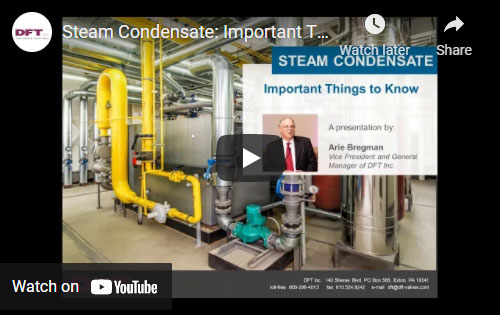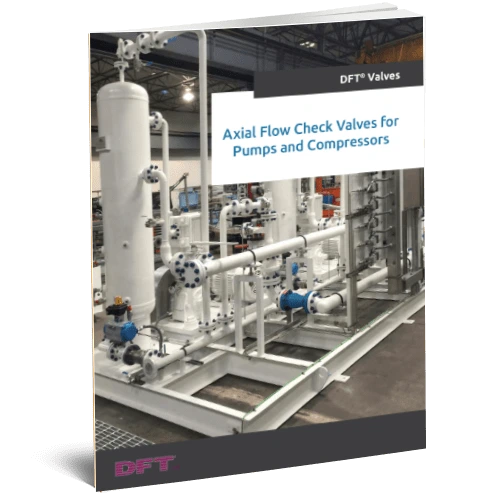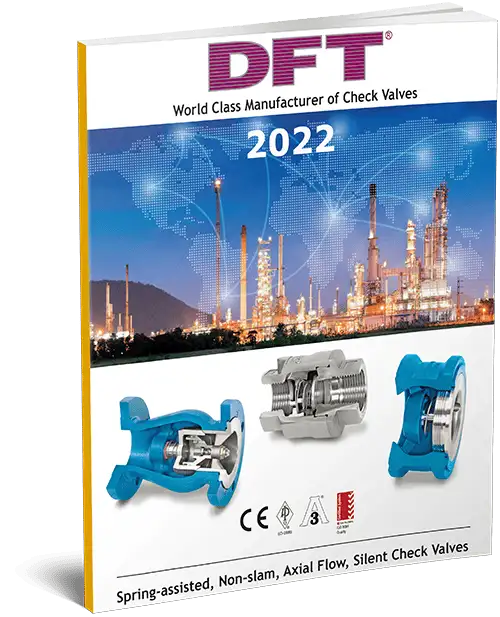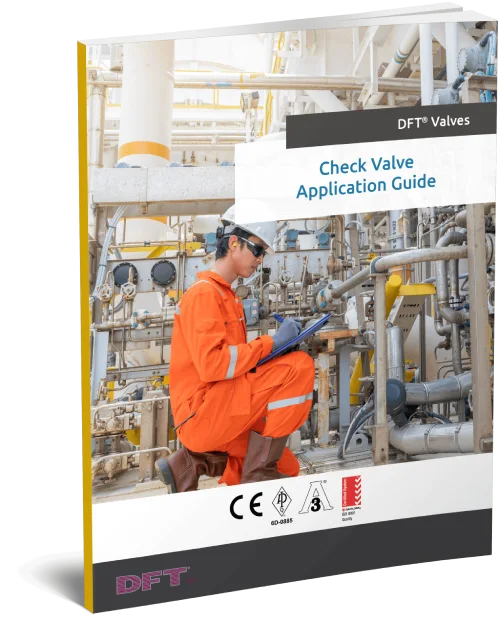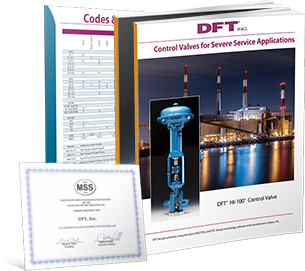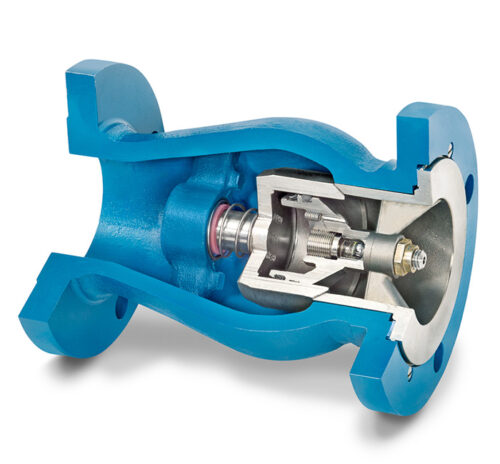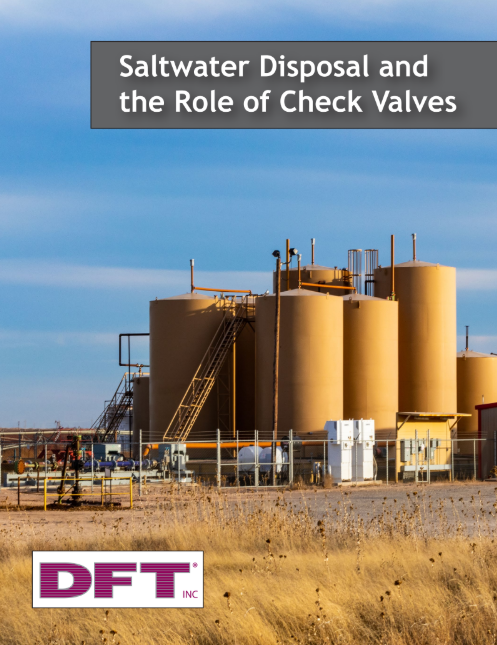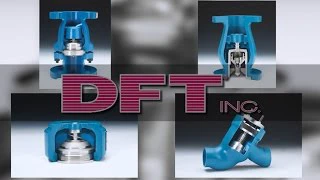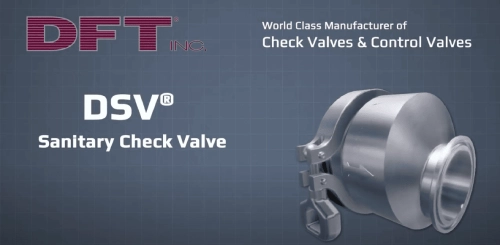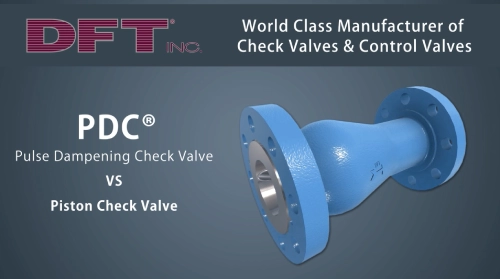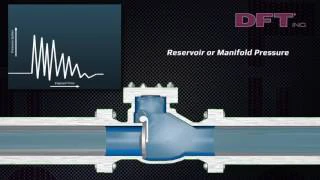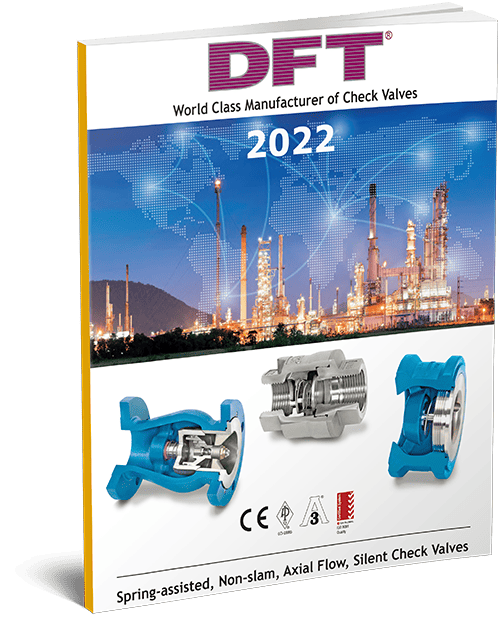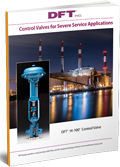Steam Condensate Webinar
Hello, and Welcome to our DFT Webinar on Steam Condensate
My name is Arie Bregman and I will be your presenter for this webinar.
Today, we’re going to be discussing the uses of steam.
I’m actually going to start with a brief history of steam, moving into problems that arise with steam systems, and then get into some solutions, as well as the valves used in steam systems. I do like to start with the history of steam because I think there’s a lot to know and understand here, and steam is a relatively new means of providing energy to the industrial world we know today.
So, without too much further ado, let’s get started.
As I said, I want to start with the history of steam because I find it quite interesting, and it does go back a long way; when we think back to the beginnings of the Industrial Revolution, all of the factories were located on streams, where we could take advantage of the swift-moving water to turn water wheels that would drive shafts and, eventually, drive all of the machinery that was located in the factory.
That meant the factories all had to be located near an appropriate stream, or a dam would have to be created to create the potential energy of a reservoir of water in order to drive the water wheels.
Steam changed all that. In 1698, Thomas Avery designed and patented a basic steam engine for use as a mining water pump, and really developed the first industrial use of steam — through that little engine that you see on the right-hand side of the screen.
That was over 319 years ago, and things have changed a little bit since the end of the 17th century. Thomas Newcomen refined that steam engine a little bit, and used it for dewatering the deep mines in England that were around during that time.
And in 1712, he created the steam engine that you see here — with a little fire at the bottom creating boiling water, driving a piston that caused an arm to move that would raise and lower the pump rod that you’re seeing on the left-hand side of that steam engine illustration.
James Watt is a name we all know very well; he used a steam engine to drive a big wheel and created the first steam locomotive back in 1778. So now we’re getting to the end of the 18th century, but this was a great boom to the Industrial Revolution, facilitating the transportation of the output of all those factories to other areas of the countries in which they were located.
This allowed factories to get bigger and bigger and, of course, they were selling their outputs to a bigger and bigger market. These steam engine inventions all were developed in England, as I said, back in the end of the 17th through the middle of the 18th century, and they were really helpful in launching the Industrial Revolution and creating the foundations of the industrial world as we know it today.
But a lot more has happened in the last 200 years, so let’s move our time machine forward a little bit and talk a little bit about all the different industries that use steam today.
As you can see from these illustrations, we’ve got chemical processing, we’ve got mining, we’ve got different petroleum production refining — the list is quite lengthy. And, most famously, of course, power generation is the industry that often comes to mind as the main user of steam in our world today.
And without steam, a lot of these industries would not exist in the form that we know today. So, how is steam used? Well, there are two main ways steam is used in all the industries I just described; one, of course, is transferring heat into a process, and the second is creating work — for example, driving a turbine to generate electrical power.
So why choose steam as your medium for transferring heat or creating work? Well, I guess all of these answers are probably about as obvious as they seem: Steam can be very easily generated; plus, it is easily controlled and transported.
It really is an ideal medium for heat transfer because water is abundant everywhere on the planet. Plus, heat sources — or the options for heat sources — are so numerous, so it’s pretty easy to create steam.
By managing the temperature and pressure of the steam, we can also use it to do a lot of work that powers the world. So the bottom line here is that because water is everywhere, and there are so many options for heating that water — for instance, coal, natural gas, and nuclear reactors — steam can provide a versatile, reliable solution for many applications.
Now you can see why it’s easy to make steam, and also why it’s easy to use to steam. And, as you can see on this slide, the top three industrial uses of steam are power, pulp and paper, and chemical processing.
Within the chemical processing industry, steam is applied to a wide variety of different applications, such as automation, quenching, dilution, fractionation, mechanical drives, and stripping; these are just a few of the ways steam is used just within the chemical processing industry.
In the mining industry, industrial steam remains very common and is used today in a broad range of applications. However, deep-mine pumping, or mine dewatering — although still in practice today — is now done quite differently; we don’t necessarily use steam to drive pumps directly. We might use the steam to create electricity for cogeneration in the mining plant, for instance, or steam may be used as a heat source in the processing of the ore that’s been mined.
So, the uses may have changed, but steam is still very, very important. Companies in the petroleum production refining industries use steam for many of the same processes used by the chemical industry. It’s common to see steam use for dilution, fractionation, quenching, and stripping, as I mentioned in an earlier slide but, in general, steam is just a very common and safe source of heat input for refining crude oil into the subproducts that we need and use in our everyday lives.
The power generation industry relies heavily on steam power, with the exception of most renewable resources. But even some solar processes are also using steam — using mirrors, for instance, to convert water in steam.
Beyond its use in photovoltaic cells, steam is also a common way to drive turbans in the solar industry; steam condensate is recycled to help reduce water-sourcing costs, as well as lessen the environmental impact of power plants.
By recycling water, less water is required, but also fewer chemicals are required to treat the water. So, the cost of the water becomes a real motivating factor in recycling the condensate in the steam system and trying to be as efficient as we possibly can in how we use that water and how we make the steam.
Pulp and paper mills also use a tremendous amount of water and steam, making the industry probably the largest user of steam after the power generation industry. In the pulp and paper sector, steam is used to heat the pulp in order to break down the wood fibers with the addition of a variety of chemicals. Ultimately, by breaking down the wood fibers, steam helps create the paper that is such a big part of our lives.
In the textile industry, steam is used to help make our processes more reliable and more efficient. However, in the textile world, steam is primarily used for drying purposes.
So, we’ve been talking about the history of steam and where steam is used in industry, and we’ve seen how steam impacts us all in our daily lives at home and at work.
So let’s talk a little bit more about the steam itself; here’s where we get into the some of the technical terms. I’ll try to not be too overwhelming. Perhaps some of you listening today have had college-level courses in thermodynamics and already know quite a lot about what I’m going to talk about.
But for the benefit of those who may not have that background, when we talk about steam, we talk about its quality; steam quality is a percentage number that expresses the dryness fraction of the steam. For instance, steam that is 5% percent liquid has a steam quality of 95. So, steam with a zero quality factor is not steam at all, but just water.
But steam with a quality of zero really has no industrial purpose other than its ability to be reheated and create higher-quality steam once again; so basically, zero-quality steam is just condensate.
Maintaining high-quality or high-percentage steam carries quite a number of benefits, including the prevention of a range of pipe and valve issues that I’ll just discuss in a little bit more detail in just a little while. In heat-transfer applications, low-quality steam can reduce the rate of heat transfer by as much as 65% — just figure the difference in the energy level.
So, it’s important to keep steam as hot as possible, and keep its quality as high as possible. On this slide, you can see what’s commonly called the steam saturation curve, which basically describes the line at which you transition from hot water to steam.
Steam can exist at any pressure and temperature from an area above the saturation curve, so just remember that above the line is steam and below the line is hot water.
Putting more heat into the steam is called “creating the steam,” so the amount of extra heat input above the situation curve is the degree of superheat contained in that steam. If you look at the curve on this slide, you can see that I have indicated an operating point at 180 °C.
And at a 2 megapascals gage pressure, that operating point will be 47° on the Celsius scale of superheat. So why do we want to superheat the steam? Steam that’s considered to be 100% dry steam has not been heated above the vaporization point at a given pressure; superheated steam is 100% dry steam that has been heated at the same pressure. Improperly managed steam can cause a lot of damage to the steam system itself.
So we have to be very careful in making sure that we are draining the condensate away and keeping it away from the parts of the system that may be negatively impacted by condensate; here, I’m illustrating an example of saturated steam at a 100 psi gauge. At that pressure, it has a saturation temperature of 338 °F in a specific volume of 3.88 cubic feet per pound. (Just as a footnote, specific volume is actually the inverse of density.)
So instead of talking about pounds per cubic feet, we’re talking about cubic feet per pound.
But if we increase the temperature to 400 °F, that’s 62 °F of superheating. The specific volume now increases from 3.88 to 4.93 cubic feet per pound — using the same number of pounds of steam to deliver more energy to the turban, or to the process, thereby making electrical generation that much more efficient.
Now let’s talk a little bit about some of the issues that we have to deal with in all these different processes, and all the different things we want to do with steam in modern industry.
Steam condensate issues are numerous; many steam maintenance problems are caused by inadequate or improper condensate removal. Other factors include low steam quality, unsuitable equipment and components, improper piping practices, and undersized or oversized pipes and valves.
Some of the issues we see in steam condensate systems today include corrosion and reverse flow — meaning the condensate is flowing in a direction we don’t want it to flow, which means it can then be heated and flashed back into steam.
Condensate flashing can have several different problems associated with it, so we need to be very aware and cognizant of the problems related to collected steam condensate; many bad outcomes can occur due to improper steam condensate management. Pipe failures can be catastrophic, like the ruptured underground pipeline you see in this slide, or they can be dangerous. For example, if a pipe fails in certain situations, it could fly across a parking lot and even land in the back of a pickup truck; that’s a picture of a Chevrolet pickup truck with a big, heavy sectional pipe on it. It’s hard to overemphasize the importance of managing steam condensate, because it can go wrong in a big hurry if you don’t.
Carbon dioxide in the pipeline can also combine with the condensate and lead to the formation of carbonic acid, which will corrode metals quite quickly, as you can see in some of these slides. These cross-sections of pipes have been corroded by carbon dioxide, resulting in carbonic acid.
Free oxygen in a system will be highly corrosive to all of the piping system components, particularly carbon steel — the most common material used in piping systems for the pipes as well as the components. The valves, flowmeters, and pumps are all generally made of carbon steel.
Issues may occur in areas where large quantities of condense collect can be pushed by the flow steam, as you can see in the illustrations on the right-hand side of this slide. When that liquid then flashes to steam, tremendous forces are exerted that can destroy pipes, valves, heat exchangers, and even the pipes themselves. In this slide, I’m illustrating just how simple it is for issues to occur in a piping system with any elevation change. And processes done in the wrong direction can easily lead to this condensate pulling problem I’m talking about.
So the correct thing to do would be to locate a steam trap; in that type of piping section, the water has to be separated from the steam. There are many different types of steam traps available depending on the specific application at hand. I’m showing just a few basic types in this slide: There is a float-style steam trap and a control-disk steam trap, as well as a metallic-style steam trap.
These are all commonly available varieties and types of steam traps, but I don’t represent a company that makes steam traps, so I don’t consider myself to be an expert on determining the best team trap for a particular application. That expertise really should come from the steam trap manufacturers themselves.
In addition to the problems associated steam condensate, there are also many opportunities, and I’m showing you the condensation curve graphic on this slide to illustrate that high-pressure condensate can be used to create lower-pressure steam. So, just above the curve, I’m showing the original operating conditions that I’m describing with P1 and T1.
Thermal energy is lost due to the nature of the process, but the pressure remains the same, or nearly the same.
So now we move from the operating pressure condition from P1 to a new lower temperature that I’m calling T2. If the system’s operating pressure is reduced to the third point on the slide that I’m describing with P2 and T2, we’ve now moved back outside of that saturation curve and have gone to an area where we once again have steam instead of hot water.
Sometimes this process is called flash steam; you’re flashing the steam in a controlled way to get to that lower-energy, lower-temperature, and lower-pressure steam that can be used to drive other processes — secondary-type processes.
Check valves can be very important in the process of steam condensate management. It’s not always possible to use off-the-shelf valves for the applications in a steam or condensate system. Oftentimes, a low-cracking-pressure check valve is required. Screwed-in check valves are the most common type used in these applications, but not the only type.
But we can also see the flange-style and wafer-style check valves being used in condensate systems. It’s a function of size and it’s a function of where these valves are going to be located that might determine which of the three styles — screwed, flanged, or wafer — will be used.
But what I’m emphasizing here are the low-cracking-pressure checked valves that need to be specified for condensate lines; in normal steam lines or hot-water lines, standard cracking pressures may be sufficient.
But there may be other special modifications needed for a standard valve to provide the best performance in these applications; in those situations, we may be thinking in terms of different seat materials — for instance, soft seats as opposed to metal seats.
As I mentioned before, corrosion is a common concern in steam condensate systems and is particularly important when condensate is allowed to accumulate and sit stagnant within the system. Left untreated over time, the corrosion can lead to system contamination, valve malfunctions, the bursting of pipes, and many, many other problems. Any of these events can lead to costly system shutdowns and huge emergency repair costs. I like to think of these issues as the phone calls you get at 2:00 a.m. — we don’t want those, and we want to avoid those 100% of the time if at all possible.
There are three different pressure-spike scenarios that can occur in piping systems.
The first occurs in liquid-only systems; these pressure spikes can be caused by valves closing suddenly or pumps shutting down suddenly. Typically, this will only occur in liquid-only systems.
In steam systems, condensate can accumulate and then flash to steam. The steam expands to a vapor, and its volume will increase by 500 to 600 times; that’s an amazing amount of expansion.
The third most dangerous form of water hammer also happens in steam systems, and is commonly called condensate-induced water hammer — or CIWH, if you’re into the acronyms. This is when the pool condensate is pushed by the high velocities of steam traveling in the pipe — much like the wind that pushes the water on a pond or a lake, creating waves. It can do that in a controlled, closed volume, as with a piping system.
When the steam builds up a wave front in the pool condensate, the flashing of the liquid from liquid to vapor can have very dramatic and very catastrophic consequences, because it will push that slug of water into one elbow or some other constriction of velocities in the hundreds of feet per second.
You can see here on the illustrations — I’m looking at a big chunk of pavement that was blown out in New York City; this happened five or six years ago. We’re also looking at the broken valve in the piping system, with the technician standing there in the lower photograph, and there’s a big chunk of that wide pattern of the valve that is gone as a result of this high-level explosion of steam.
There are a number of factors that should be carefully considered when designing or redesigning a steam condensate system.
These include line size, which I focus on a lot in this webinar and other webinars that I’ve done on the value and importance of properly sizing the lines and the valves that are in these system — and I do mean all of the valves. Always make sure that the pipes themselves are properly sized, because this can be a leading cause of steam-condensate collection.
The location of condensate return lines in relation to other pieces of process equipment is very, very important. Proper insulation methods and techniques are particularly important for preventing flashing. Look for low points where condensate can and will accumulate.
The final point I want to leave you with in this slide is to consider the type or quality of the valve used — particularly check valves. Not all check valves will do an adequate job of handling condensate; again, there may be special modifications to the valve required for low-cracking-pressure springs, and perhaps even a soft seat material would be advisable to prevent the steam from wire drawing and creating an erosion, if you will, between the closure mechanism and the seat mechanism.
So, what have we learned today?
Well, I guess beauty is in the eye of the holder; but then knowledge is in the head of the individual. I would say we’ve definitely learned that steam itself, of course, plays an important role in just about every industrial segment we can think of.
Chemical processing, mining, petroleum production, petroleum refining, power generation, pulp and paper, textile — these are just some of the industries that use steam every day to do what they need to do, to provide the service or the products we’re looking for.
Maintaining high-quality steam carries a number of benefits, including the prevention of a range of piping and valve issues. Plus, proper system designs are inherently lower in maintenance costs.
Recovery and steam condensate saves the user money; but also, a source of low-pressure steam — that flash steam that I talked about a few slides back — can be used in other parts of the process as well.
DFT Inc. has been designing and manufacturing world-class inline silent, or non-slam, check valves since 1943. When check valves are sized properly for the system, you get higher system integrity, and critical components of your steam condensate system will work a whole lot better.
One of the most popular valves we sell for steam-condensate applications is our SCV check valve; this is the screwed-end-style check valve that you see in the illustration on the slide. The valve style, coupled with some simple modifications for low cracking pressures, performs exceptionally well in many steam condensate lines. There are a lot of other valve options that may also be worth considering.
We suggest that you contact one of the valve experts at DFT to discuss the specific issues that concern you.
We have other resources available to help you solve many valving and piping problems — such as water hammer — and better understand the challenges of steam and condensate. Finally, check out our eBook that’s available through our website under the literature tab.
If you sent me any questions, I will be very happy to answer them; after this webinar, I will be responding to your emails and will try to provide you with all the information you need and answer any questions.
Please feel free to contact me through our website, or through any of our regional sales managers or marketing staff, and thank you for being a part of this webinar today. I really do appreciate your attendance and look forward to the questions you may have for me. I will answer them immediately after this webinar concludes. Once again, thank you very much; I appreciate your attendance today.

